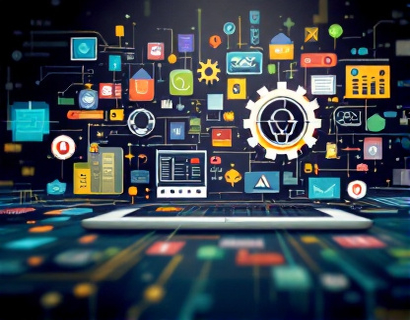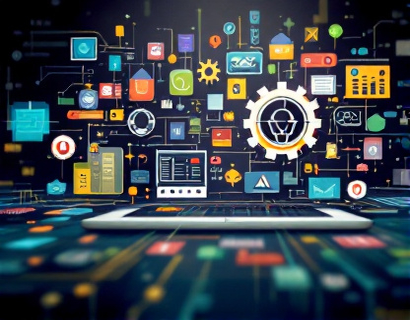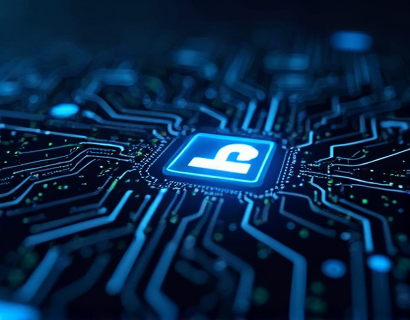Seamless Integration of AI and Blockchain: A Comprehensive Guide for Business Digital Transformation
The digital transformation landscape is rapidly evolving, driven by technological advancements that promise to revolutionize how businesses operate. Among these, the integration of Artificial Intelligence (AI) and blockchain technology stands out as a pivotal development. This guide aims to provide a thorough understanding of how businesses can seamlessly integrate AI and blockchain to streamline operations, enhance security, and unlock new growth opportunities. By exploring the synergies between these two transformative technologies, business leaders can navigate the complexities of digital transformation with confidence and strategic foresight.
Understanding AI and Blockchain
Before delving into the integration of AI and blockchain, it's essential to understand each technology individually. Artificial Intelligence, encompassing machine learning, natural language processing, and predictive analytics, enables machines to perform tasks that traditionally required human intervention. AI's primary strength lies in its ability to analyze vast amounts of data, identify patterns, and make informed decisions autonomously.
Blockchain, on the other hand, is a decentralized digital ledger technology that ensures transparency, security, and immutability in transactions. By distributing data across a network of computers, blockchain eliminates the need for intermediaries, reducing costs and increasing trust among participants. The combination of AI's analytical prowess and blockchain's security features creates a powerful synergy that can drive significant value for businesses.
Benefits of Integrating AI and Blockchain
The integration of AI and blockchain offers numerous benefits that can transform various aspects of business operations. One of the primary advantages is enhanced security. Blockchain's inherent security features, such as cryptographic hashing and consensus mechanisms, can protect AI systems from data breaches and cyber attacks. This is particularly crucial for businesses handling sensitive information, such as financial data or personal identifiers.
Another significant benefit is improved data integrity and transparency. Blockchain's immutable ledger ensures that data remains unaltered and traceable, which is vital for maintaining the accuracy of AI models. AI algorithms rely on high-quality data to make reliable predictions and decisions. By integrating blockchain, businesses can ensure that the data fed into AI systems is authentic and tamper-proof, leading to more accurate outcomes.
Furthermore, the integration of AI and blockchain can optimize business processes and operations. AI can automate routine tasks, freeing up human resources for more strategic activities. Blockchain can facilitate smart contracts, which are self-executing contracts with the terms directly written into code. These smart contracts can automate and enforce agreements, reducing the need for manual intervention and minimizing the risk of errors or fraud.
Use Cases of AI and Blockchain Integration
To illustrate the practical applications of AI and blockchain integration, let's explore several use cases across different industries.
In the financial sector, banks and financial institutions can leverage AI for fraud detection and risk management, while using blockchain for secure and transparent transaction processing. AI algorithms can analyze transaction patterns to identify suspicious activities, while blockchain ensures that all transactions are recorded immutably and can be traced back to their origin. This combination enhances the overall security and efficiency of financial operations.
In the supply chain industry, AI and blockchain can work together to improve traceability and efficiency. AI can optimize logistics and inventory management by predicting demand and automating reordering processes. Blockchain can provide a transparent and tamper-proof record of every step in the supply chain, from production to delivery. This ensures that all parties have access to accurate and up-to-date information, reducing delays and disputes.
In the healthcare sector, AI can assist in diagnosing diseases and personalizing treatment plans, while blockchain can secure patient data and ensure compliance with regulations. AI algorithms can analyze medical records and imaging data to detect anomalies, while blockchain can store and share patient data securely, giving healthcare providers seamless access to critical information. This integration enhances patient care and operational efficiency.
Challenges and Considerations
While the integration of AI and blockchain offers significant benefits, businesses must also be aware of the challenges and considerations involved. One of the primary challenges is the technical complexity of integrating these technologies. Both AI and blockchain require specialized knowledge and expertise, which can be a barrier for organizations without in-house specialists. Collaborating with technology partners or consulting firms can help bridge this gap.
Another consideration is the scalability and performance of integrated systems. Blockchain networks, especially public ones, can face scalability issues due to their consensus mechanisms and data storage requirements. AI systems, on the other hand, demand substantial computational resources for training and inference. Businesses need to carefully evaluate the scalability of their integrated solutions to ensure they can handle growing data volumes and transaction loads.
Regulatory compliance is another critical aspect. As AI and blockchain are relatively new technologies, regulatory frameworks are still evolving. Businesses must stay informed about local and international regulations governing data privacy, security, and usage. Ensuring compliance can help avoid legal issues and build trust with customers and stakeholders.
Strategies for Seamless Integration
To successfully integrate AI and blockchain, businesses should adopt a strategic approach that addresses the technical, operational, and regulatory aspects. Here are some key strategies to consider:
First, conduct a thorough assessment of your current infrastructure and identify areas where AI and blockchain can add the most value. This involves understanding your business processes, data flows, and pain points. By pinpointing specific use cases, you can tailor your integration efforts to address the most critical challenges.
Second, invest in building or partnering with a skilled team capable of managing the integration process. This team should include experts in AI, blockchain, and cybersecurity to ensure a comprehensive approach. Continuous learning and upskilling are essential as these technologies continue to evolve.
Third, start with pilot projects to test the integration in a controlled environment. This allows you to identify and resolve issues before scaling up. Pilot projects can also provide valuable insights and demonstrate the potential benefits to stakeholders, facilitating broader adoption.
Fourth, focus on data management and governance. Establish clear policies for data collection, storage, and usage to ensure compliance and maintain data integrity. Implement robust security measures, leveraging blockchain's cryptographic capabilities to protect sensitive information.
Finally, foster a culture of innovation and collaboration within the organization. Encourage cross-functional teams to explore new possibilities and share knowledge. Engaging with the broader ecosystem, including technology providers and industry peers, can also drive innovation and best practices.
Future Trends and Opportunities
As AI and blockchain continue to mature, several trends and opportunities are emerging that businesses should keep an eye on. One notable trend is the development of hybrid blockchain and AI platforms that combine the strengths of both technologies. These platforms aim to provide more efficient and secure solutions for complex business problems.
Another trend is the rise of decentralized AI markets, where AI models and data can be traded and monetized in a secure and transparent manner. This could democratize access to AI resources and create new revenue streams for businesses. Additionally, the increasing adoption of edge computing alongside AI and blockchain can enhance real-time data processing and decision-making, further optimizing business operations.
Looking ahead, the integration of AI and blockchain is poised to play a crucial role in the broader context of digital transformation. As businesses seek to stay competitive in a rapidly changing landscape, embracing these technologies will be essential for driving innovation, enhancing security, and unlocking new growth opportunities.
In conclusion, the seamless integration of AI and blockchain offers a powerful pathway for businesses to transform their operations, secure their data, and tap into new markets. By understanding the benefits, addressing the challenges, and adopting strategic approaches, business leaders can navigate the digital transformation journey with confidence and success.










































